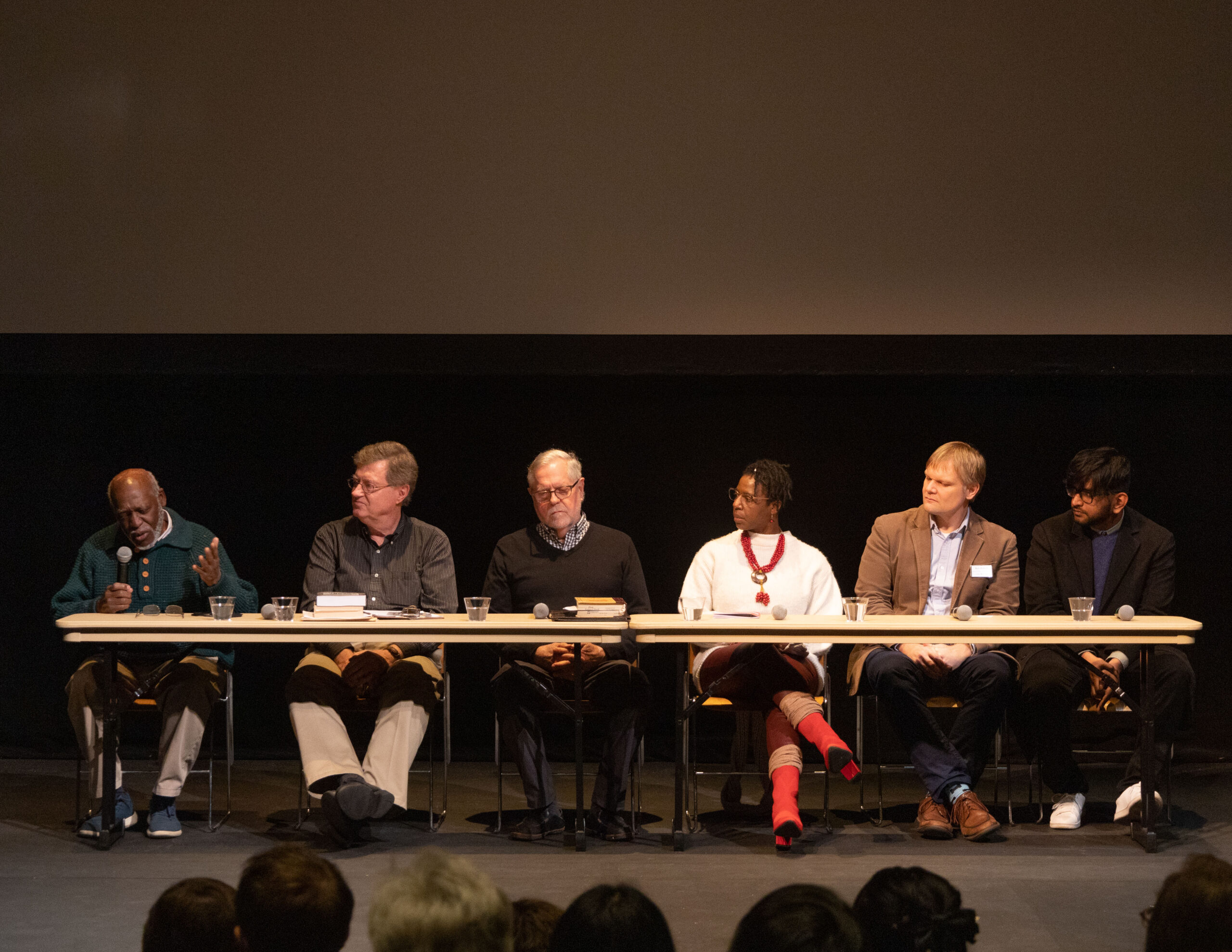This past Saturday, “Goshen: A Sundown Town’s Transformation” premiered at Umble Center.
The project has been months in the making. As a Maple Scholar this past summer, Silas Immanuel, an accounting and film double major, researched and began work on a documentary about Goshen’s history as a “sundown town.”In James Loewen’s book, “Sundown Towns,” a sundown town is defined as an organized jurisdiction – a city, for example – that for decades kept African-Americans or other groups from living there or even staying overnight.
This piece of history has already been made public and officially acknowledged. In 2015, the Goshen City Council unanimously passed a resolution to formally recognize the reality of Goshen’s past as a sundown town.
However, the interpretation of that history is divisive. In 2019, the Goshen Community Relations Commission held a meeting to discuss the potential addition of a marker acknowledging Goshen’s racist history. In a survey conducted online, 75 to 80% of people supported the initiative, while 20 to 25% spoke out against it, asking why they would reopen the wounds of the past.
Lee Roy Berry, a former Goshen professor and practicing attorney, emphasized the importance of acknowledging this history in a 2018 presentation.
“If you’re going to embrace the U.S. as the land of the free and the home of the brave,” he said, “then you must embrace the downside. You can’t play with history; you must be honest.”
Goshen may no longer function as a sundown town, but racism has persisted. A Klu Klux Klan rally was held in the city as recently as 1996, and Berry still has memories of racism he has encountered.
“When my wife and I started to build our house, we went out on a Sunday to see how the house was coming. I showed it to some friends of mine,” he said. “On the way back, I looked in the rearview mirror and saw a Goshen city police officer following me. He followed me to the place that we were then living, and I saw him pass me by, and then I got on the phone and called up the police department and asked, ‘Why were you following me?’ He was honest, and he told me that ‘we got a call saying that there was this Black guy out there driving drunk.’”
Addressing such a divisive topic in documentary form is no small task, so Immanuel did not take his assignment lightly.
“For arts degrees,” he said, “your grade in a class does not define where you end up. It’s the stories that you tell. And I know that if I do this story right, people will know that I’m capable of really being passionate about stories that matter. That’s constantly in the back of my head, that this project means a lot to me.”
This care manifested itself in a thorough, refined research process. The documentary included interviews with Berry, Rev. Robert Hunt, Dan Shenk, a professional copy editor and former Elkhart Truth reporter, Allan Kauffman, former Goshen mayor and Regina Shands Stoltzfus, director of peace, justice and conflict studies at Goshen.
Goshen’s 2015 resolution was a first step in acknowledging Goshen’s exclusionary past.
“Whereas, historical studies by multiple independent researchers confirm that Goshen was a sundown town for approximately the first two-thirds of the 20th century…”
The resolution goes on to present proof of this past, with an expressed goal to “acknowledge the racist and exclusionary aspects of Goshen’s ‘sundown town’ history, along with the pain and suffering these practices caused.”
“Call it ethnic cleansing, American style,” Shenk said in a 2018 presentation.
Many ask for proof of Goshen ever existing as a sundown town. One of the difficulties of accurately verifying Goshen’s status is a historical lack of “White Only” signs, or signs to that effect.
“Methods used in the Maple City for the first two-thirds of the twentieth century were largely social and cultural,” Shenk said.
A Goshen PR piece from the mid-thirties says the quiet parts out loud.
“Contributing in a large measure to the absence of crime,” the piece says, “is the character of the population of Goshen. Nationalities are 97.5% native born white, and 2.5% foreign born white. There is no negro population.”
This type of racist language persisted in these newsletters until 1979.
“So that, you know, when you start talking about ‘oh, it’s all ancient history’ – no it’s not,” Shenk said.
In 1956, an article was written documenting Goshen High School’s 12th annual minstrel show, which included a photograph with dozens of students wearing blackface. This performance underscores the normalization of racist portrayals of black people in Goshen, even without written laws.
The topic of race in the United States is a difficult one to deal with. Immanuel’s hope is that his documentary can bring people together.
“Above all, this documentary is for Goshen,” he said. “Having heard the stories and having spent time with the city, I’ve realized that this documentary is one that has to be spoken of if Goshen is to accept its racial tension that still exists today.”
“I don’t expect to change hearts over this documentary, but I hope to start a conversation.”




